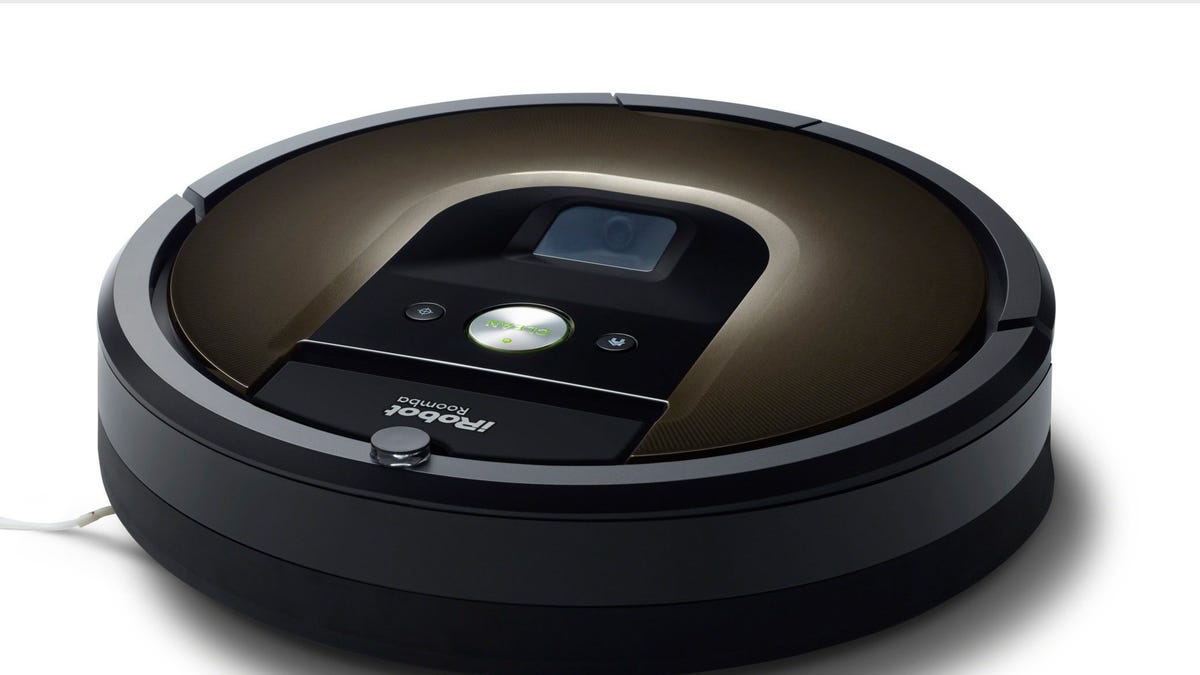
iRobot enters the smart home with Roomba(R) 980 vacuum cleaning robot. (PRNewsFoto/iRobot Corporation)
The robots are coming — they just don't look like us.
Dystopian visions of 400-pound titanium monsters guided by artificial intelligence (and ready to crush us if we humans get out of line) probably aren't on any mortal's time horizon. But there is plenty of automated technology that is infecting everything from household gadgets to instruments, making them smarter and, well, more life-like.
The most obvious new introduction this past week was iRobot's new Roomba vacuum cleaner, the star of innumerable YouTube videos of vacuum-riding cats. The new $899 Roomba 980 is more powerful than previous versions and has a Wi-Fi connection and a smartphone app for remote scheduling. But the biggest news in the robotics front is that it uses a camera and DSPs (digital signal processors) to learn and map the layout of your home (and all the furniture within).
The smarter Roomba brain means it can be more efficient. It won't repeatedly spin around and clean the same spot like a drunken automaton. So the 980 should be able to cover more ground, or carpet, on a single two-hour charge. And yes, cats will still either fear or love the roving discus. However, iRobot only demonstrated the device with a stuffed cat during the company’s launch event for the Roomba Sept. 16.
What iRobot didn't talk about during its presentation was the 800-pound vacuum that wasn't in the room: Dyson's forthcoming robotic inhaler the 360 Eye. Dyson has proven itself to be a master marketer, and the company has already been touting a camera and mapping system in the yet-to-released model. So, in many ways, iRobot's update of the Roomba was a way to get out in front of Dyson.
Meanwhile, on the autonomous car front, the National Highway Traffic Safety Administration (NHTSA) announced that it was working with a slew of automaker to voluntarily make automatic sensing and braking systems standard in most vehicles. Such systems are considered to be the next step on the way to self-driving cars and as a safety technology can be remarkably effective. If such systems were commonplace now, they probably would have prevented or at least mitigated the kind of accident that injured comedian Tracy Morgan and killed fellow comic James McNair.
The move by NHTSA is an acknowledgment by the agency that technology is maturing faster than the government can create new regulations. By promoting the automatic emergency braking systems with cooperation from companies including GM, Ford, Toyota, Volkswagen, Ford, Mercedes-Benz, and Volvo, NHTSA is also hoping to put pressure on the rest of the auto industry – Hyundai and Fiat Chrysler, for instance — to also make the systems standard equipment, rather than expensive options.
As smart as these semi-robotic technologies all are, they are generally not as smart as humans. I can still do a better job vacuuming my living room than a Roomba can. Usually, I can also see farther ahead and begin braking before any automatic system engages. But this week, Casio introduced an instrument that demonstrated how digital systems are closing in on the analog originals.
Casio debuted a new type of electric piano that's designed not to sound like an electric piano, but rather to sound like a grand piano. Casio, which started with basic calculators back in the 1950's, is making a statement with the new Celviano Grand Hybrid pianos: Smart digital instruments can be as musical as acoustic concert instruments. The Celviano uses wooden keys (from Austrian spruce) and action mechanisms that mimic acoustic pianos, but the rest is all digital intelligence, including samples from C. Bechstein instruments, resonance algorithms, and a speaker system designed to imitate a grand's soundboard.
The Celviano is not intended to replace the musician and be a digital player piano, however. But under the adroit fingers of an accomplished concert pianist, the Celviano sounds better than any upright piano, to be sure, and many would probably not be able to tell the difference between it and an acoustic baby grand. It's a slightly disconcerting feeling to think such a smart instrument could one day replace the original--for a lot less money. The top Celviano Grand Hybrid model is $6,000, a far cry from the roughly $30,000 that a used Steinway baby grand will set you back.
So from household chores to transportation to entertainment, smart systems are creeping in. The technology is no longer in its infancy. It's reached its adolescence, with everything from cars to keyboards. So in small ways, robotic tech is becoming more useful and yet invisible. Now, if they could just make a robot that could do my laundry properly.




















